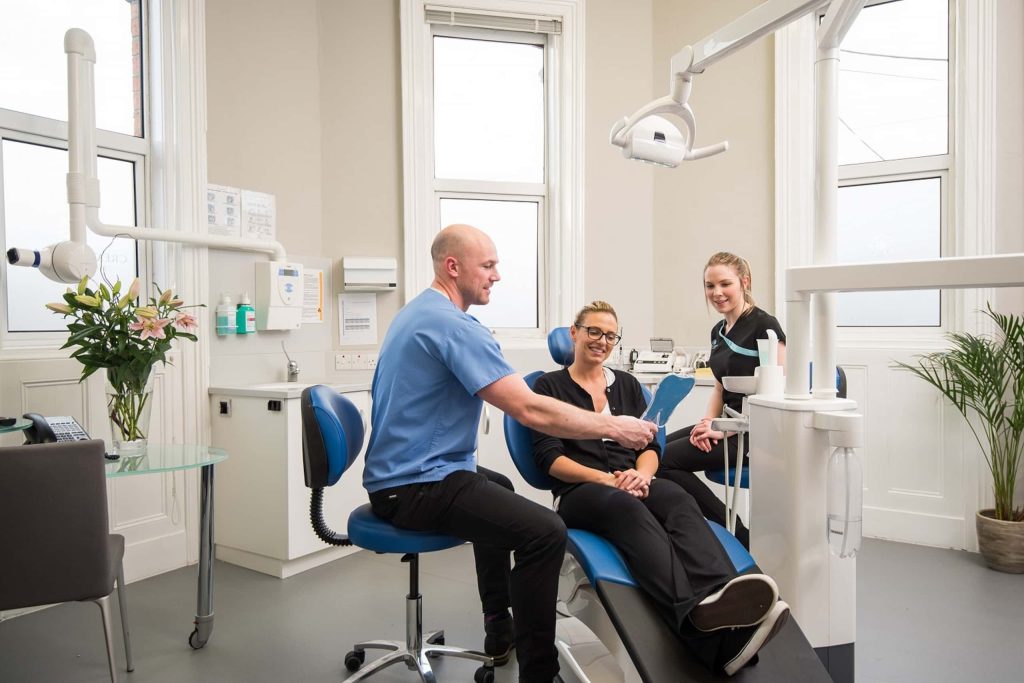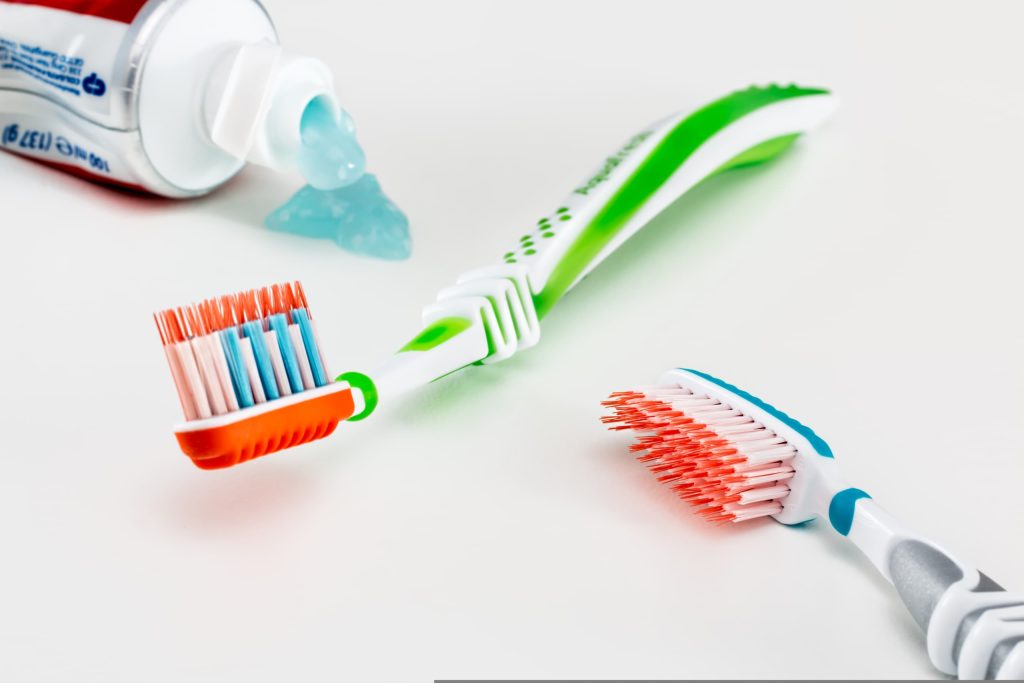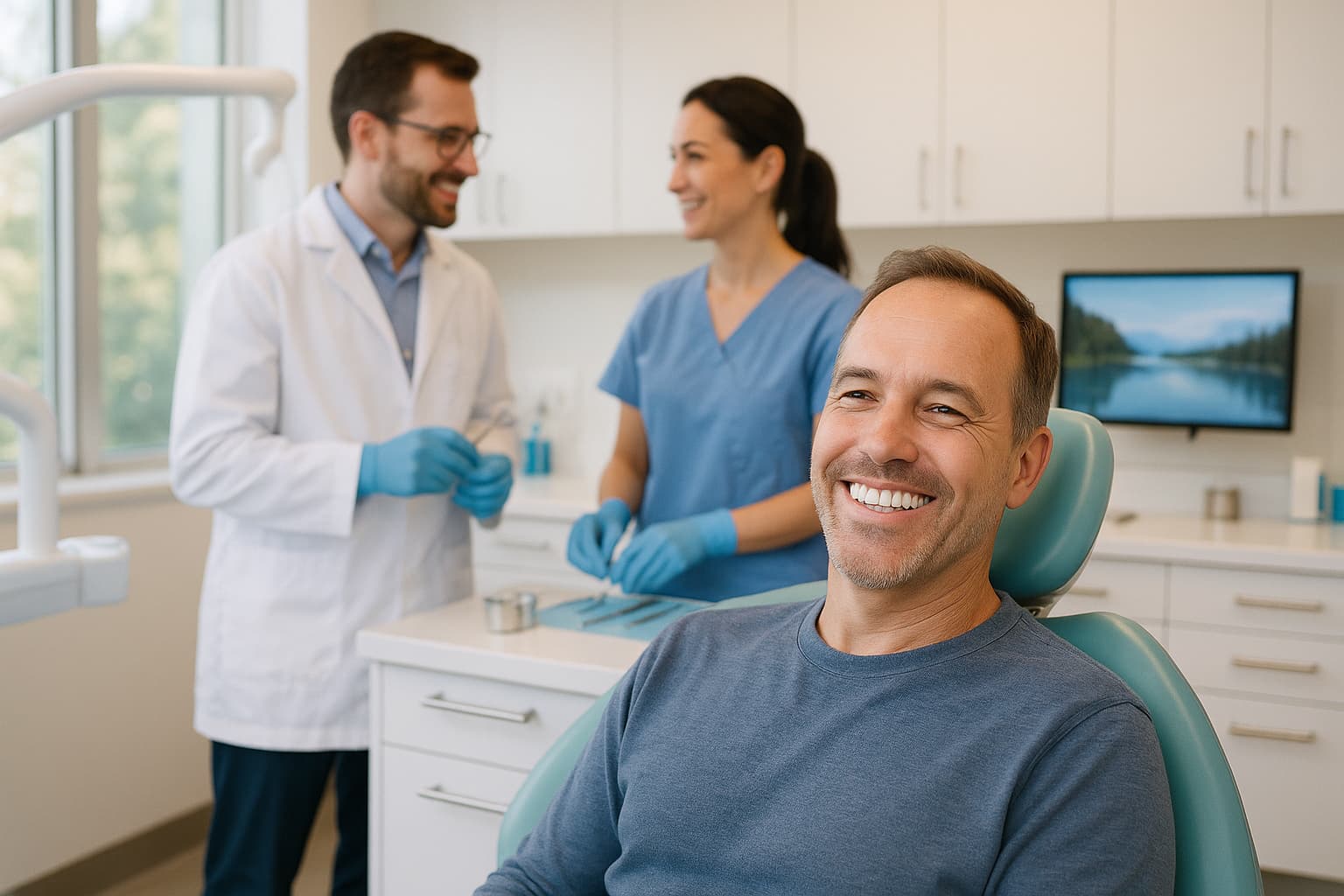All on 4 implants and All on 6 implants
Considering dental implants but feeling overwhelmed by options, costs, or trust? You’re not alone. Many patients worry about finding reliable dentists abroad or getting clear, affordable treatment plans.
Have you searched for an affordable, but reliable option, but with no success? Maybe it’s time to consider combining vacation and fun with dental work. That’s where Booking Dentist comes in – an online platform that connects you with vetted top dental clinics worldwide.
We simplify dental tourism by letting you compare clinics, read real reviews, and book directly – no hidden costs, free consultations, exclusive discounts, and support from your own patient manager every step of the way. Plus, our best price guarantee gives you full confidence in your care.
Dental implants have become the gold standard for long‑term tooth replacement because they insert a biocompatible screw into the jawbone, acting as an artificial root that fuses with bone through osseointegration[1].
Once healed, the implant supports a crown, bridge or full‑arch prosthesis, offering stability and the feeling of natural teeth. Traditional dentures and bridges can be less stable, often require removing healthy tooth structure, and do not prevent the bone loss that occurs after teeth are lost.
Implants, on the other hand, preserve bone volume and deliver excellent long‑term survival (over 95 % at ten years)[2]. This guide compares the popular All‑on‑4 and All‑on‑6 full‑arch solutions, detailed costs across regions, and offers practical tips for choosing a clinic and caring for your new smile.
What Are Dental Implants?

Definition and Components
- Implant fixture – A titanium or titanium‑alloy screw that is surgically placed into the jawbone to serve as an artificial tooth root[1]. Osseointegration creates a strong bond between bone and implant.
- Abutment – A connector attached to the implant that supports a crown, bridge or denture.
- Prosthesis – The visible part (crown, bridge or full‑arch) that restores appearance and function.
Want to compare different implant brands? Read our article How to Choose the Right Dental Implant Brand
Benefits Compared to Dentures and Bridges
- Bone preservation: Implants stimulate the jawbone, reducing bone resorption. Conventional dentures do not prevent bone loss.
- Stability: Implants anchor directly to bone, meaning they do not slip or click during speech or eating.
- Longevity: Systematic reviews report survival rates >99 % at two years for implant‑supported bridges[3] and >95 % at ten years for single implants[2].
- Maintenance: Implants are brushed and flossed like natural teeth, whereas bridges may require extra cleaning devices.
Ideal Candidates
- Adequate bone volume and density (or willingness to undergo bone grafting if needed).
- Good general health (non‑smoker or willing to quit, no uncontrolled diabetes).
- Commitment to regular oral hygiene and dental check‑ups.
- Patients who are missing one tooth, several teeth, or an entire arch and desire a long‑term solution.
All‑on‑4 vs All‑on‑6 Dental Implants: Explained
Overview of Full‑Arch Solutions
Full‑arch implant rehabilitation replaces all teeth in the upper or lower jaw with a fixed bridge supported by four (All on 4) or six (All on 6) implants. The implants are placed at strategic angles to maximise bone support, allowing many patients to avoid bone grafts.
All‑on‑4 Implants
- Four implants per arch: two implants placed vertically in the front and two angled implants in the posterior (tilted up to 45 °) to maximise anterior bone and avoid the sinus or nerve.
- Immediate loading: a provisional full‑arch prosthesis is usually attached on the day of surgery.
- Clinical outcomes: a 2022 retrospective study of 83 patients reported a cumulative implant survival rate of 89.7 % for All‑on‑4 cases over a mean 6.5‑year follow‑up[4]. Biological complications, including peri‑implantitis and bone loss, were more frequent than in All‑on‑6 cases, and prosthesis success was lower.
All‑on‑6 Implants
- Six implants per arch, providing greater surface area for load distribution.
- Often uses straighter implants because additional fixtures allow better distribution of chewing forces.
- Generally recommended for patients with good bone volume or those who clench their teeth (bruxism) since more implants reduce stress on each implant.
- Clinical outcomes: the same 2022 study found a 99.0 % implant survival rate for All‑on‑6 cases[4], with no prosthesis failures recorded. However, the technique requires more implants and may cost more initially.
Key Differences Between All‑on‑4 and All‑on‑6
| All-on-4 | All-on-6 | |
| Implant positioning | Two anterior vertical implants + two posterior angled implants | Usually six straight or slightly angled implants |
| Bone requirements | ✅Suitable for patients with limited posterior bone; may avoid sinus lifts | Requires more bone volume; better suited for patients with adequate bone |
| Prosthesis support | Less surface area; slightly higher risk of mechanical complications | ✅Greater distribution of load; fewer complications[4] |
| Long‑term survival | Implant survival rate ~89.7 % and prosthesis survival 88.2 %[4] | ✅Implant survival rate 99 % with no prosthesis failures[4] |
| Cost | ✅Generally lower initial cost due to fewer implants | Higher initial cost but may reduce maintenance issues |
Pros and Cons of Each Technique
All‑on‑4
- Pros: Less surgery (fewer implants), lower initial cost, immediate restoration, often avoids bone grafting, shorter chair‑time.
- Cons: Higher risk of biological and mechanical complications[4], less support and stability for patients with heavy chewing forces, long‑term maintenance may be higher.
All‑on‑6
- Pros: Greater stability and load distribution, higher long‑term survival and fewer prosthetic failures[4], recommended for bruxers or those seeking a durable solution.
- Cons: Requires more bone or grafting, higher upfront cost, slightly longer surgery.
Still not sure about which procedure is right for you? Find more information in our article All-on-4 vs All-on-6: Find the Perfect Fit for Your Smile
Dental Implant Costs 2025: Comprehensive Comparison
Factors Influencing Dental Implant Pricing
- Implant materials & brand: Premium brands (e.g., Straumann, Nobel Biocare) cost more than generic implants.
- Clinic location and living costs: Countries with high cost‑of‑living indices (e.g., Denmark or the UK) charge more because clinical overheads and wages are higher. Eurostat reports that Denmark’s price‑level index was 43 % above the EU average, whereas Bulgaria’s was 40 % below[5].
- Number of implants and prosthesis type: All‑on‑6 uses more implants than All‑on‑4 and therefore is pricier. Choice of zirconia or porcelain prosthesis also affects cost.
- Additional procedures: Bone grafts, sinus lifts or extractions increase the total.
- Dentist’s expertise and accreditation: Specialists with international accreditation may charge higher fees.
- Currency fluctuations: Exchange rates can make overseas treatments more or less affordable.
For more information on managing costs of dental procedures read our article Discover Flexible Payment Options for Dental Tourism
Cost‑Saving Opportunities Through Dental Tourism
High dental costs in many high‑income countries encourage patients to seek treatment abroad. The CDC’s Yellow Book notes that dental care is the most common form of medical tourism among U.S. residents because domestic costs are high[6].
The Guardian reports that Australia spent A$11.1 billion on dental care in 2021‑2022, with about 60 % paid out‑of‑pocket[7] – another driver for seeking more affordable options abroad. Patients choosing reputable clinics overseas can save between 50 % and 70 % on implant treatments compared with prices in high‑income countries according to comparative studies summarised below[8].
Ready for your new smile?
Fill out our form by clicking the button bellow.
Cost Comparison Tables
Important: Dental implant costs vary widely and change over time. The figures below come from a systematic review and comparative studies (2010‑2014) summarised in a 2016 peer‑reviewed article[8][9] and may not reflect 2025 prices exactly. However, they illustrate the relative differences between countries. For updated quotes and exclusive discounts, contact Booking Dentist’s patient managers.
Cost Comparison for European Patients (example countries)
| Country | Single implant cost (approx.) | Accreditation & quality | Language accessibility | Travel considerations | Estimated savings vs UK | Recommended clinics* |
|---|---|---|---|---|---|---|
| United Kingdom | £2 700 [10] | Governed by the General Dental Council (GDC); high standards | English | Direct flights; high local costs | – | / |
| Germany/Scandinavia | €1 200–3 000 [12] | Regulated by KZBV and local Chambers; ISO‑certified laboratories common | English/German | Short flights; Schengen visa | Up to ~40 % compared with UK | / |
| Hungary – Clinics | €820-€1 000 [9][12] | Popular dental tourism hub; many clinics accredited by the Hungarian Dental Association; some are ISO 9001‑certified | English widely spoken; doctors fluent | Low‑cost flights to Budapest; accommodation packages available | ~50–60 % vs UK | See our listing of Budapest clinics |
| Turkey – Clinics | The Turkish Dental Association’s 2024 tariff sets a base price of 13 975 TL (~€400) for a single implant[14]; excludes brand‑specific surcharges. | Clinics often accredited by the Turkish Dental Association (TDB) and JCI | English/Spanish/Arabic; translators available | Visa not needed/on arrival for many nationalities; combine treatment with a beach holiday | 65–80 % vs UK, depending on implant brand | See our listings for Istanbul, Antalya and Ankara clinics |
| Romania – Clinics | €400 per implant [15] | Romania Dental College regulates; ISO 9001 certification | English and French | Low‑cost flights; EU/Schengen travel; affordable accommodation | >70 % vs UK | See our listings for Bucharest and Timisoara clinics |
*Booking Dentist works with dozens of accredited clinics. Patients receive free initial consultations and a best‑price guarantee.
Cost Comparison for American Patients
| Country & Booking Dentist link | Single implant cost (approx.) | Accreditation & quality | Language accessibility | Travel considerations | Estimated savings vs USA | Recommended clinics |
|---|---|---|---|---|---|---|
| United States | ADA’s Health Policy Institute survey (2024) reports $3 100–5 800 per implant[11]. | Regulated by state dental boards and ADA standards | English | No travel required | – | – |
| Mexico – Clinics | ~US$1 000 per implant[10] (2010 study). | Many clinics accredited by Cofepris and ISO‑certified. | English/Spanish | Short flights; land crossings easy; ensure travel insurance | 50–70 % vs USA | See our listings for Los Algodones, Tijuana and Mexico City clinics |
| Costa Rica – Clinics | ~US$1 000–1 500 per implant [10]. | Accredited by the Board of Dental Surgeons of Costa Rica; many clinics ISO‑certified; JCI‑accredited hospitals. | English widely spoken. | Direct flights from major U.S. hubs; combine with eco‑tourism | ~50–60 % vs USA | See our listing for San José clinics |
Cost Comparison for Australian Patients
| Country | Single implant cost (approx.) | Accreditation & quality | Language accessibility | Travel considerations | Estimated savings vs Australia |
|---|---|---|---|---|---|
| Australia – Clinics | High domestic costs contribute to a 60 % out‑of‑pocket share of dental spending[7]. AU$4 000–5 000 according to market surveys (no official tariffs). | Regulated by the Australian Health Practitioner Regulation Agency (AHPRA). | English | No travel needed | – |
| New Zealand – Clinics | Comparable to Australia; approximate cost NZ$3 500–4 500 per implant (no official data). | Regulated by the Dental Council of New Zealand; many dentists trained internationally. | English | Short travel for local residents; high local cost | Little to none |
| Thailand – Clinics | ~US$1 350 per implant[10] (2010 study). | Dental tourism sector is large and regulated by the Dental Council of Thailand; many clinics accredited by the Ministry of Public Health. | English widely spoken in tourist clinics. | Long‑haul flights; combine treatment with a holiday; some clinics provide airport transfers. | 60–70 % vs Australia |
| Vietnam – Clinics | Approximately US$1 200–1 400 per implant (comparable to neighbouring Thailand). Figures are based on market analyses. | Clinics are overseen by the Vietnam Ministry of Health; many dentists trained overseas. | English; interpreters available. | Flights from Sydney or Melbourne (8–10 h); affordable accommodation. | 60–65 % vs Australia |
| India – Clinics | US$600–1 100, often including the crown[17]. | Regulated by the Dental Council of India; many ISO‑certified clinics; JCI‑accredited hospitals in metropolitan areas. | English widely spoken; many dentists trained overseas. | Long flights but low local costs; combine with tourism. | 70–80 % vs Australia |
These cost ranges are for illustrative comparison. Booking Dentist offers exclusive, up‑to‑date quotes and a best‑price guarantee* – always check current prices before booking.
How to Find Affordable, High‑Quality Dental Implants

- Research Accredited Clinics Abroad: Look for clinics accredited by national dental associations or international bodies (e.g., Joint Commission International). Booking Dentist partners only with vetted clinics and lists accreditation details on each clinic’s page.
- Balance Cost with Reputation: Don’t choose based solely on the lowest price. Review surgeon credentials, implant brand, and patient feedback. The FEDCAR (Federation of European Dental Competent Authorities) emphasises that public coverage of dental care varies widely across Europe and that voluntary health insurance is common[19].
- Read Patient Reviews and Success Stories: Patient experiences give insight into communication, comfort and post‑operative support. Verified reviews on Booking Dentist help you compare clinics transparently.
- Consult your Dentist: A local dentist can advise whether you’re a good candidate and may provide necessary dental records for your chosen clinic.
- Plan for Follow‑up: Ensure you can return to the clinic for adjustments if needed or have a local dentist willing to provide follow‑up care. Complications requiring follow‑up are relatively uncommon (overall implant survival >95 %)[2], but having a plan provides peace of mind.
For more help on clinic research read our article Ensuring Quality: How to Check a Dentist’s Credentials and Reviews.
Dental Implant Procedure: A Step‑by‑Step Overview
Step 1: Initial Consultation & Assessment
- Comprehensive examination: Dentist evaluates oral health, bone density and general health; X‑rays or CBCT scans are taken. For a guide on how to prepare for initial examination, read our article How to Transfer Dental Records and X-Rays to Your Chosen Clinic.
- Treatment planning: The clinician proposes implant options (single implant, All‑on‑4, All‑on‑6) and discusses costs, risks and expected outcomes.
Step 2: Implant Surgery – What to Expect
- Anaesthesia and sedation: Local anaesthesia with or without conscious sedation. Patients typically report little pain during the procedure. For more information about sedation, read our article Managing Dental Anxiety With IV Sedation in Hungary: What to Expect.
- Placement: The surgeon makes a small incision, drills a precise hole and inserts the titanium implant[1]. For All‑on‑4, posterior implants may be tilted.
- Immediate loading (optional): A provisional bridge is attached on the same day for All‑on‑4/All‑on‑6 cases. Otherwise, a healing cap is placed.
Step 3: Temporary Teeth Placement & Final Restoration
- Osseointegration period: The bone heals around the implant over 3–6 months. Patients wear a temporary crown or bridge.
- Final prosthesis: Once integration is confirmed, an abutment and final crown/bridge or full‑arch prosthesis are fitted.
Recovery and Aftercare Tips for Dental Implants
Typical Recovery Timeline
- First 3 days: Mild swelling and discomfort; soft diet recommended. A 2024 randomised trial showed that low‑level laser therapy significantly reduced pain and inflammatory markers during the first week[20], suggesting adjunctive therapies may improve comfort.
- 1 week: Stitches are removed (if non‑resorbable). Continue gentle brushing and antiseptic rinses.
- 2–6 weeks: Soft tissue heals; gradually resume normal diet. Avoid smoking and intense exercise.
- 3–6 months: Bone integrates with the implant. During this time, practice excellent oral hygiene and attend follow‑up visits.
Looking for nutritional post-op advice? Read our article on Foods to Avoid After Implant Surgery: The Ultimate Post-Op Diet Guide
Managing Pain, Swelling and Accelerating Healing

- Cold compresses in the first 24 hours help reduce swelling.
- Prescribed analgesics and anti‑inflammatory medications (e.g., ibuprofen) control pain and swelling.
- Low‑level laser therapy may reduce pain and promote soft tissue healing[20].
- Nutrition: Eat soft, nutrient‑rich foods (soups, yogurt, mashed vegetables) and stay hydrated.
For more information on managing the healing process and unexpected complications, read our article Handling Unexpected Dental Emergencies Abroad: A Guide for Implant Patients.
When Can You Resume Normal Activities?
- Work: Many patients return to desk‑based work within 2–3 days. Those with physically demanding jobs may need a longer rest period.
- Exercise: Light walking is encouraged after 24 hours. Avoid strenuous exercise for at least a week.
- Travel: Flying is usually safe after a few days. The CDC advises avoiding flying immediately after dental surgery to minimise barotrauma[6].
Warning Signs of Complications
- Persistent or increasing pain/swelling after a few days
- Fever or malaise
- Implant mobility or difficulty chewing
- Pus or bad taste around the implant site
- Numbness that doesn’t resolve
If any of these occur, contact your implant dentist immediately.
For more detailed information read our article Monitoring Implant Health: Recognizing Signs of Success and Failure.
Maintenance: Ensuring Long‑Term Dental Implant Success

- Daily oral hygiene: Brush twice a day with a soft‑bristle brush, floss daily and consider interdental brushes or water flossers around implant prostheses.
For tips on maintaining hygiene during your trip read our article Keeping Your Smile Bright on Vacation: Must-Have Travel Kits and Handy Tips. - Regular check‑ups: Visit your dentist at least twice yearly for professional cleaning and radiographic monitoring. Early detection of peri‑implantitis is key to intervention.
- Avoid smoking and limit alcohol: Smoking increases the risk of implant failure and peri‑implantitis; cessation markedly improves outcomes[2].
Are you a smoker who wishes to quit? Read why it’s important in our article Understanding the Connection Between Smoking and Dental Implants. - Protect against bruxism: Night guards or occlusal splints may be advised if you grind your teeth.
- Monitor systemic health: Conditions like uncontrolled diabetes can compromise healing; maintain regular medical care.
Conclusion: Choosing the Right Dental Implant Option
Dental implants offer one of the most reliable and aesthetically pleasing solutions for tooth loss. Whether you need a single tooth replaced or a full‑arch restoration, options such as All‑on‑4 and All‑on‑6 provide effective rehabilitation. The decision should consider bone anatomy, chewing forces, budget and desired longevity.
Evidence suggests that All‑on‑6 implants deliver higher survival and fewer prosthetic complications[4], but All‑on‑4 remains a cost‑effective choice for many patients with limited bone.
International price differences can be dramatic. For example, implant treatments cost around €1 000 in Hungary compared with £2 700 in the UK[8], and $1 000 in Mexico versus $3 100–5 800 in the USA[11]. These savings drive dental tourism.
Booking Dentist connects patients with accredited clinics across Europe, the Americas and Asia, offering transparent pricing, patient reviews and free consultations. With proper research and maintenance, dental implants can restore function and confidence for decades.
Don’t wait for a perfect smile – Find a Dental Clinic with Booking Dentist
Ready to explore your dental implant options? Fill out the short form below to receive a free, no-obligation quote from accredited dental implant clinics worldwide. Our patient managers will match you with the ideal clinic, coordinate travel, and arrange post-treatment care – guaranteeing the best price and a seamless experience from start to finish.
Sources
[1] Dental Implants | FDI World Dental Federation – https://www.fdiworlddental.org/dental-implants
[2] Survival analysis of dental implants placed in a private practice. A multicenter prospective cohort study – PMC – https://pmc.ncbi.nlm.nih.gov/articles/PMC11231890
[3] The all-on-four treatment concept: Systematic review – PubMed – https://pubmed.ncbi.nlm.nih.gov/28298995
[4] Immediate flapless full-arch rehabilitation of edentulous jaws on 4 or 6 implants according to the prosthetic-driven planning and guided implant surgery: A retrospective study on clinical and radiographic outcomes up to 10 years of follow-up – PubMed – https://pubmed.ncbi.nlm.nih.gov/36197040
[5] Comparative price levels of consumer goods and services – Statistics Explained – Eurostat – https://ec.europa.eu/eurostat/statistics-explained/index.php
[6] Medical Tourism | Yellow Book | CDC – https://www.cdc.gov/yellow-book/hcp/health-care-abroad/medical-tourism.html
[7] Open (your wallet) wide: Australians pay more for dental care than most OECD countries | Australia news | The Guardian – https://www.theguardian.com/australia-news/2025/jan/28/australians-pay-more-for-dental-care-than-most-oecd-countries
[8] [9] [10] [12] [13] [15] [16] [17] [18] Global Tourist Guide to Oral Care – A Systematic Review – PMC – https://pmc.ncbi.nlm.nih.gov/articles/PMC5072095
[11] How Much Do Dental Implants Cost? – https://connect.aaid-implant.org/blog/how-much-do-dental-implants-cost
[14] Dental Implant Cost Calculator 2024 – Doredent – https://doredent.com/en/dental-implant-cost-calculator
[19] Patients’ Access to Oral Healthcare in Europe : updated 2024 figures | FEDCAR – https://fedcar.eu/en/news/2024/11/patients-access-to-oral-healthcare-in-europe-updated-2024-figures
[20] Low-level laser therapy on soft tissue healing after implantation: a randomized controlled trial | BMC Oral Health | Full Text – https://bmcoralhealth.biomedcentral.com/articles/10.1186/s12903-024-05258-7
[21] Clinical outcomes of 3–5 years follow-up of immediate implant placement in posterior teeth: a prospective study | BMC Oral Health | Full Text – https://bmcoralhealth.biomedcentral.com/articles/10.1186/s12903-024-04058-3
[22] Oral health-related quality of life in implant-supported rehabilitations: a prospective single-center observational cohort study | BMC Oral Health | Full Text – https://bmcoralhealth.biomedcentral.com/articles/10.1186/s12903-024-04265-y\


